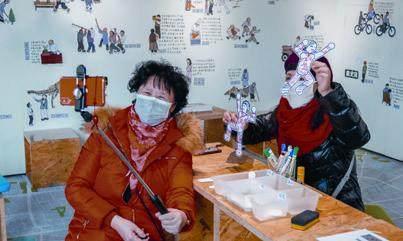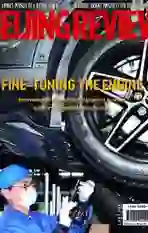The Megacity Mindset
2022-05-29ByTaoZihui
By Tao Zihui

A picture book titled Central Axis hit the shelves of bookstores around China last year. Truth be told, the theme of this book is perhaps not the easiest of subject matters: How does one present the history and significance of a central line cutting right through the heart of Beijing? How can one possibly make it sound exciting?
Those with a somewhat deeper understanding of Beijing’s architecture or history must have heard about the Central Axis. With a length of 7.8 km, the Central Axis running through China’s capital refers to the best-preserved core area of the ancient city stretching from Yongding Gate in the south to the Bell and Drum Towers in the north. Spanning 750 years of history, it covers huge number of historical buildings and cultural sites, including Tiananmen Square and the Forbidden City (Palace Museum). Today, this line is not only a representative physical carrier recalling traditional urban life, but an urban landscape still in full vigor.
And that’s exactly what Song Zhuangzhuang, mastermind behind Central Axis and founder of Diduhui, or Visualizing Beijing Studio, aims to convey. He wants to show readers a rich, inclusive and innovative central axis, one that connects with real daily life.
“We’re talking aquariums, flour mills, radio stations, and even airports... We wanted to create a book that allows you to really understand the axis, a book that allows you to discover your own connection to the central line,” Song told Beijing Review.
The book has three chapters—City, Architecture and Life, representing the macro, meso and micro perspectives of understanding the Central Axis, respectively. Each chapter has its own “look:”Cities are maps; buildings are models; life comes in the form of illustrations.
“The Central Axis is a witness to history and the space showcases Chinese traditional aesthetics which prefer symmetry, order and etiquette,” Song said. “Its greatness lies not only in the continuous Chinese civilization and grand architecture, but also in the countless possibilities it has always offered to its residents,” the designer explained. “As times change, so does a city.”
“I really like Beijing. I want more and more people to grow to like it as well, but that’s proving no easy feat,” Song said.
An architect and a designer, he wants to explain the capital through pictures and present a more all-encompassing perception. After graduating from the School of Architecture at Tsinghua University and then getting his master’s degree at Harvard University, Song, a native Beijinger, and his business partner Li Mingyang, began to revisit the capital’s blueprints in a bid to explore and explain its (hidden) minutiae. They wondered:
What’s the smallest scenery spot in town? What’s the coolest one?
How many kilometers are Beijing’s subway transfers?
Who are the residents of Chaoyang, the city’s largest district?
And so their list went on and on.
“At that point, in 2016, we focused more on architecture, as well as related fields,” Song said. The team first organized, then edited and finally re-designed the data flow using visual means.
Six years later, Visualizing Beijing Studio has grown into a team that popularizes and interprets the city’s lifestyles, people, culture, construction and trending topics via diagrams, videos, reports and regular exhibitions.
“Today, the metropolitan mindset is a more emotional one, based on people’s own ideas,” Song added. “Their reactions and findings often derive from similar sources of information.” He hoped to add a touch of rational and neutral understanding.
For example, with their research on Beijing’s subway system, Song and his team tried to visualize how long transfers really are, in terms of distance, to help people better understand the so called “irrationality” that often seemingly swamps the urban layout. When commuters were complaining about the extensive transfer at Xizhimen subway station, Song found its design to be an optimal solution.
“I drew a big map listing the transfer distances and methods of all subway stations, trying to explain that a transfer is not just about distance; there are many underlying factors that further complicate things,” he said.
For Song, there is an interactive relationship between a city and its people.“A city houses residents; you have to take care of it, instead of just taking from it,” he explained. “We receive convenience and opportunities from it and so we must find ways to do something in return.” There’s always an urban stone left unturned.
Beijing is a megacity, with many levels and facets, and it cannot be summed up in a few words. “Even if you have lived in it for a long time, it still has things you know nothing about. It’s like a vault, waiting for you to explore its hidden gems,” Song added.
Song is beginning to realize that it is far from enough to understand a metropolis only through palpable things.” With the capital counting some 21.9 million permanent residents as of late 2021, according to the Beijing Municipal Bureau of Statistics in March, the focus should always be on the people.

According to Li Mingyang, a cofounder of the studio, the city’s future holds a cultural system that belongs to its residents. As far as he’s concerned, the Beijing of the new era should extract its cultural elements from numerous aspects; every aspect of daily life can be endowed with cultural meaning.
“Think about it. The transport we rely on for our daily commutes can become a kind of transportation visualization; the natural landscape we see every day can become a kind of fine art; even our daily habits or the images of people from different regions and countries can be culturalized,” he added. “That is the real contemporary Beijing and the ideal urbanity we expect to cultivate.” BR
